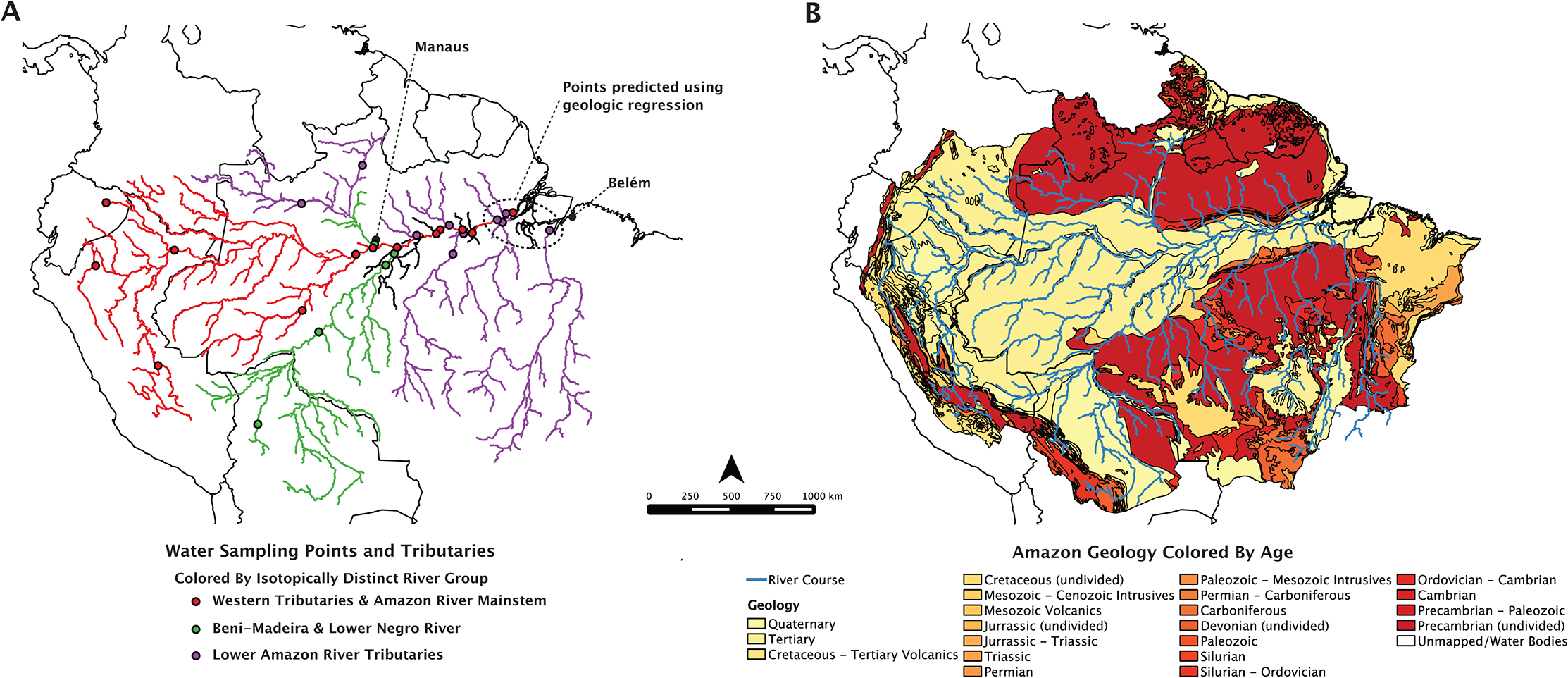Water Sampling
Water Sampling
Water samples are the "Secret Decoder Ring" in this process. Unfortunately, getting them them isn't as easy as opening a cereal box!
In order to decode the chemical signals recorded in the otolith you have to have something to compare them to, you have to know the code. By collecting water samples from the tributaries throughout the range of the fish you are studying, then analyzing them for trace elements and isotopes we are developing the cipher we will use to decode the otoliths!
In the Amazon, taking water samples would require thousands of miles of plane trips and driving to collect all the samples necessary to create our "Decoder Ring" cipher to unlock all the chemical signals in the fish. Luckily, other people have mostly done this for us. It turns out this same information is important for determining how fast the Andes mountains are eroding away.
Samples that we don't have can be estimated using a technique I developed that has been shown to work in the Amazon. This technique relies on the tight relationship between the geology of the watershed and the ratio of 87Sr and 86Sr (the isotopes we primarily use to determine location) to predict unknown samples based on the geologic map. The map below, from our PLOS One paper, shows where sample points are available, and the geology used to predict sample points.

- Published on Mar 30, 2016
- 16 views
- 0 comments
- Print this page
- Back to Methods